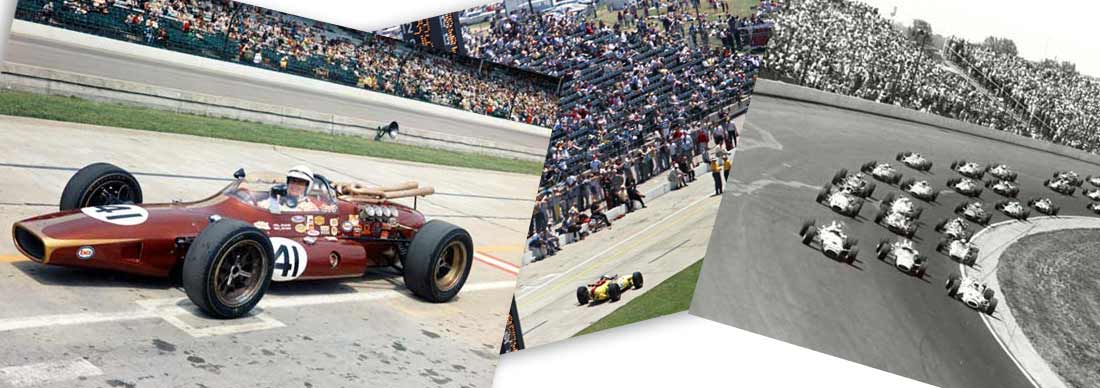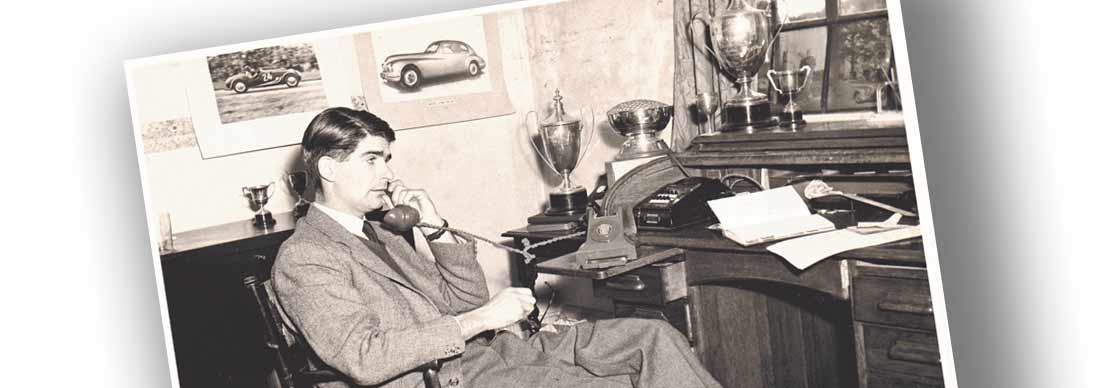
Butch Cassidy the Race Driver - Part 1
Mark Cole looks back at the career of PLN
Butch Cassidy came late to motor racing. He was, along with Steve McQueen, Hollywood’s top-grossing movie actor during the 1960s and 1970s. But unlike McQueen, Paul Newman had given little thought to cars - which would happen to be the title of his final film - until he was in his 40s.
However, it led to a hard-earned second place in the 1979 Le Mans 24-Hours, sharing Dick Barbour’s Hawaian Tropic Porsche 935 with its owner and factory driver Rolf Stommelen, almost 10 years after fellow actor Steve McQueen had taken his Porsche 908 to 2nd place in the Sebring 12-Hours.

That Newman had driving talent was undisputed – he won four SCCA championships in his Datsun/Nissans, before forming his own CanAm and CART teams, giving Nigel Mansell the 1993 Indycar title. Even then, he continued racing, and was still winning a few days after his 70th birthday, when he took the GTS class in the 1995 Daytona 24-Hours. He was back for more at the Speedway, aged 80.
I was fortunate enough to meet up with him several times at Daytona International Speedway, where he had become something of a fixture, when I was working for Eurosport television. The first was in 1995. He never had security guards like some Hollywood superstars, but first I had to get past his paddock PR posse.
“You want to interview Mr Newman?” they asked. “Then you’ll have to send a fax request three weeks in advance, and we’ll check what time slot may be available. It’s not likely we can fit you in, but that’s the procedure.”
I didn’t have three weeks; the race was starting in three hours. No matter, I had what his PR people didn’t – a pit pass, and I went for the direct approach with microphone in hand and camera already running, bearing in mind that American colleagues had told me PLN was entirely approachable, as long as you didn’t mention Hollywood.

“Paul Newman, here at Daytona on your 70th birthday – how do you feel about the race?
“A man has got to be somewhere, and this is as good a place as any. I guess we have as much as a chance as any team here, as long as I don’t hold them back.”
After the race win, it was straight in again with the camera running:
“Awesome, it ain’t bad for an elderly gentleman.”
“Are you pleased with your performance?”
“I’m just pleased to have a pulse.”
Walking back to the pits, the mic now off, he opened up. “I don't like talking about acting because that's business and pretty boring. And politics can get you in trouble. But I'll always talk about racing because the people are interesting and fun, the sport is a lot more exciting than anything else I do, and nobody cares that I'm an actor. I wish I could spend all my time at the racetrack. By the way, where can I watch Eurosport?"
Paul Newman was born in 1925 at Shaker Heights, Ohio, and his interest in the sport came when he was sent on a course at the Watkins Glen Racing School to prepare for the film Winning, the 1969 Indy 500 movie in which he starred with his wife Joanne Woodward, whom he had married the previous year, and Robert Wagner. The same year, he and Robert Redford had starred in Butch Cassidy and the Sundance Kid, roles which would mark their lives forever.
From then on, auto racing became his passion, a sport which he described as “the first thing I found any grace in”. After presenting a TV series on the history of automobiles in the early 1970s, he started racing himself in 1972, at the age of 47, in a Lotus Elan, as a distraction from his movie career; at the races, any mention of his films was taboo, and he quickly became a Good Old Boy, known to everyone on the tracks as PLN.
His talent quickly showed: he was already winning Sports Car Club of America races with Bob Sharp’s Datsuns by the time he went to the 1979 Le Mans 24-Hours with Dick Barbour Racing. As stated, sharing the Hawaiian Tropic Porsche 935 with the owner and Rolf Stommelen, they finished 2nd overall. Newman and Stommelen did the bulk of the driving.
He and Stommelen reprised their 2nd place a month later in the Watkins Glen 6-Hours, the next round of the World Championship. ”Rolf was designated the lead driver and set pole, but this was Paul Newman’s day,” recalls Janos Wimpffen in Time and Two Seats. “The actor put on one of his more aggressive performances to bring the car home into a strong second place.”
His Datsun drives in the United States also earned him the respect of his fellow racers, and he was to win four national SCCA and TransAm titles with the cars by the end of the 1970s, and stayed faithful to Sharp and the brand – which had by now become Nissan – throughout the 1980s.

Above: 1979 Paul Newman at the 24hr Grand Prix, Le Mans
Nobody at the tracks knew Paul Newman better than his race engineer Mark Schomann. “I always knew PLN as a race car driver who pretended he was an actor. That was his best act, pretending he was an actor.
“He wasn’t. He didn’t hang out in Hollywood; he was a race car driver who wanted to drink a beer and have his foot on a tyre, and occasionally he’d go, ‘Shit, I’ve got to get to work and do a movie’.
“I was always amazed at how quick he could be with how little time he’d actually spend in the car, and had very good feedback, better even than some of the pros I worked with. He was an exceptional driver. At the first Rennsport at Lime Rock, he took a Porsche 917 out, a death trap with old Dunlops on it, and just threw it round the track, barely making it round the corners. When he came in, I asked him how it was. ‘Oh not that bad…’
“He often said he would have liked the chance to race against Steve McQueen, but it never happened. They both had their biggest successes in world sportscar racing – McQueen at Sebring in 1970, Newman at Le Mans in 1979, both in Porsches. But Steve was then blocked by his insurers, so might have gone on to even greater things. We’ll never know.”
Newman formed his own team, with Bill Freeman, to run in CanAm and Indycar, based in Santa Monica; Newman Freeman Lola-Chevrolets quickly started winning, and in 1979 Keke Rosberg and Elliott Forbes-Robinson gave the team the CanAm Vice-Championship with three wins between them.
In 1980, Freeman pulled out, leaving Newman – who had by now attracted Budweiser beer sponsorship – to run the team from Laguna Seca with ex-March man Barry Green. A downside that year was that their British star Stephen South lost a leg in a crash at Trois-Rivieres.
Newman was also disenchanted with Lola importer Carl Haas, who ran a rival CanAm team. “He would provide my Lolas late, overweight and over budget, and was keeping all the trick stuff for his own use.”
Click here for 'Butch Cassidy the Race Driver - Part 2'






Leave a comment
This site is protected by hCaptcha and the hCaptcha Privacy Policy and Terms of Service apply.